Triprolidine
Editor-In-Chief: C. Michael Gibson, M.S., M.D. [1]; Associate Editor(s)-in-Chief: Alberto Plate [2]
Disclaimer
WikiDoc MAKES NO GUARANTEE OF VALIDITY. WikiDoc is not a professional health care provider, nor is it a suitable replacement for a licensed healthcare provider. WikiDoc is intended to be an educational tool, not a tool for any form of healthcare delivery. The educational content on WikiDoc drug pages is based upon the FDA package insert, National Library of Medicine content and practice guidelines / consensus statements. WikiDoc does not promote the administration of any medication or device that is not consistent with its labeling. Please read our full disclaimer here.
Overview
Triprolidine is a antihistamine that is FDA approved for the treatment of symptoms due to hay fever (allergic rhinitis) or other upper respiratory allergies, runny nose, sneezing, itching of the nose or throat and itchy, watery eyes. Common adverse reactions include xerostomia, sedation, nasal mucosa dry, pharyngeal dryness, thick bronchial sputum.
Adult Indications and Dosage
FDA-Labeled Indications and Dosage (Adult)
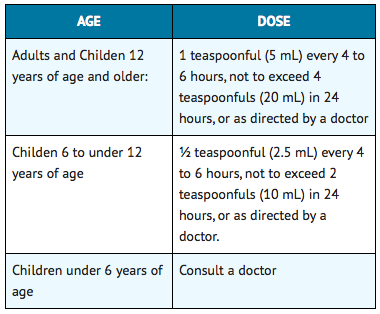
Off-Label Use and Dosage (Adult)
Guideline-Supported Use
There is limited information regarding Off-Label Guideline-Supported Use of Triprolidine in adult patients.
Non–Guideline-Supported Use
There is limited information regarding Off-Label Non–Guideline-Supported Use of Triprolidine in adult patients.
Pediatric Indications and Dosage
FDA-Labeled Indications and Dosage (Pediatric)

Off-Label Use and Dosage (Pediatric)
Guideline-Supported Use
There is limited information regarding Off-Label Guideline-Supported Use of Triprolidine in pediatric patients.
Non–Guideline-Supported Use
There is limited information regarding Off-Label Non–Guideline-Supported Use of Triprolidine in pediatric patients.
Contraindications
There is limited information regarding Triprolidine Contraindications in the drug label.
Warnings
Do not exceed recommended dosage
Ask a doctor before use if you have:
- a breathing problem such as emphysema or chronic bronchitis
- glaucoma
- trouble urinating due to an enlarged prostate gland
Ask a doctor before use if you are taking sedatives or tranquilizers
When using this product
- excitability may occur, especially in children
- may cause drowsiness
- alcohol, sedatives and tranquilizers may increase the drowsiness effect
- avoid alcoholic beverages
- use caution when driving a motor vehicle or operating machinery
Stop use and ask a doctor if new symptoms occur
If pregnant or breast-feeding, ask a health professional before use.
Keep out of the reach of children.
In case of overdose, get medical help or contact a Poison Control Center right away.
Adverse Reactions
Clinical Trials Experience
There is limited information regarding Triprolidine Clinical Trials Experience in the drug label.
Postmarketing Experience
There is limited information regarding Triprolidine Postmarketing Experience in the drug label.
Drug Interactions
There is limited information regarding Triprolidine Drug Interactions in the drug label.
Use in Specific Populations
Pregnancy
Pregnancy Category (FDA):
There is no FDA guidance on usage of Triprolidine in women who are pregnant.
Pregnancy Category (AUS):
There is no Australian Drug Evaluation Committee (ADEC) guidance on usage of Triprolidine in women who are pregnant.
Labor and Delivery
There is no FDA guidance on use of Triprolidine during labor and delivery.
Nursing Mothers
There is no FDA guidance on the use of Triprolidine in women who are nursing.
Pediatric Use
There is no FDA guidance on the use of Triprolidine in pediatric settings.
Geriatic Use
There is no FDA guidance on the use of Triprolidine in geriatric settings.
Gender
There is no FDA guidance on the use of Triprolidine with respect to specific gender populations.
Race
There is no FDA guidance on the use of Triprolidine with respect to specific racial populations.
Renal Impairment
There is no FDA guidance on the use of Triprolidine in patients with renal impairment.
Hepatic Impairment
There is no FDA guidance on the use of Triprolidine in patients with hepatic impairment.
Females of Reproductive Potential and Males
There is no FDA guidance on the use of Triprolidine in women of reproductive potentials and males.
Immunocompromised Patients
There is no FDA guidance one the use of Triprolidine in patients who are immunocompromised.
Administration and Monitoring
Administration
There is limited information regarding Triprolidine Administration in the drug label.
Monitoring
There is limited information regarding Triprolidine Monitoring in the drug label.
IV Compatibility
There is limited information regarding the compatibility of Triprolidine and IV administrations.
Overdosage
There is limited information regarding Triprolidine overdosage. If you suspect drug poisoning or overdose, please contact the National Poison Help hotline (1-800-222-1222) immediately.
Pharmacology
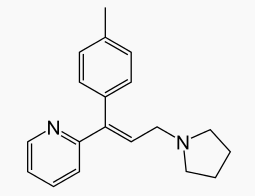
| |
Triprolidine
| |
| Systematic (IUPAC) name | |
| 2-[(E)-1-(4-methylphenyl)-3-pyrrolidin-1-yl- prop-1-enyl]pyridine | |
| Identifiers | |
| CAS number | |
| ATC code | R06 |
| PubChem | |
| DrugBank | |
| Chemical data | |
| Formula | Template:OrganicBox atomTemplate:OrganicBox atomTemplate:OrganicBoxTemplate:OrganicBoxTemplate:OrganicBoxTemplate:OrganicBoxTemplate:OrganicBoxTemplate:OrganicBoxTemplate:OrganicBoxTemplate:OrganicBoxTemplate:OrganicBoxTemplate:OrganicBoxTemplate:OrganicBoxTemplate:OrganicBox atomTemplate:OrganicBoxTemplate:OrganicBoxTemplate:OrganicBoxTemplate:OrganicBoxTemplate:OrganicBoxTemplate:OrganicBoxTemplate:OrganicBoxTemplate:OrganicBoxTemplate:OrganicBox |
| Mol. mass | 278.391 g/mol |
| SMILES | & |
| Physical data | |
| Melt. point | 60 °C (140 °F) |
| Solubility in water | 500 mg/mL (20 °C) |
| Pharmacokinetic data | |
| Bioavailability | 4% oral |
| Protein binding | 90% |
| Metabolism | Hepatic (CYP2D6) |
| Half life | 4-6 hours |
| Excretion | Renal |
| Therapeutic considerations | |
| Pregnancy cat. |
C (US) |
| Legal status |
OTC (US) |
| Routes | Oral |
Mechanism of Action
There is limited information regarding Triprolidine Mechanism of Action in the drug label.
Structure
There is limited information regarding Triprolidine Structure in the drug label.
Pharmacodynamics
There is limited information regarding Triprolidine Pharmacodynamics in the drug label.
Pharmacokinetics
There is limited information regarding Triprolidine Pharmacokinetics in the drug label.
Nonclinical Toxicology
There is limited information regarding Triprolidine Nonclinical Toxicology in the drug label.
Clinical Studies
There is limited information regarding Triprolidine Clinical Studies in the drug label.
How Supplied
There is limited information regarding Triprolidine How Supplied in the drug label.
Storage
There is limited information regarding Triprolidine Storage in the drug label.
Images
Drug Images
{{#ask: Page Name::Triprolidine |?Pill Name |?Drug Name |?Pill Ingred |?Pill Imprint |?Pill Dosage |?Pill Color |?Pill Shape |?Pill Size (mm) |?Pill Scoring |?NDC |?Drug Author |format=template |template=DrugPageImages |mainlabel=- |sort=Pill Name }}
Package and Label Display Panel
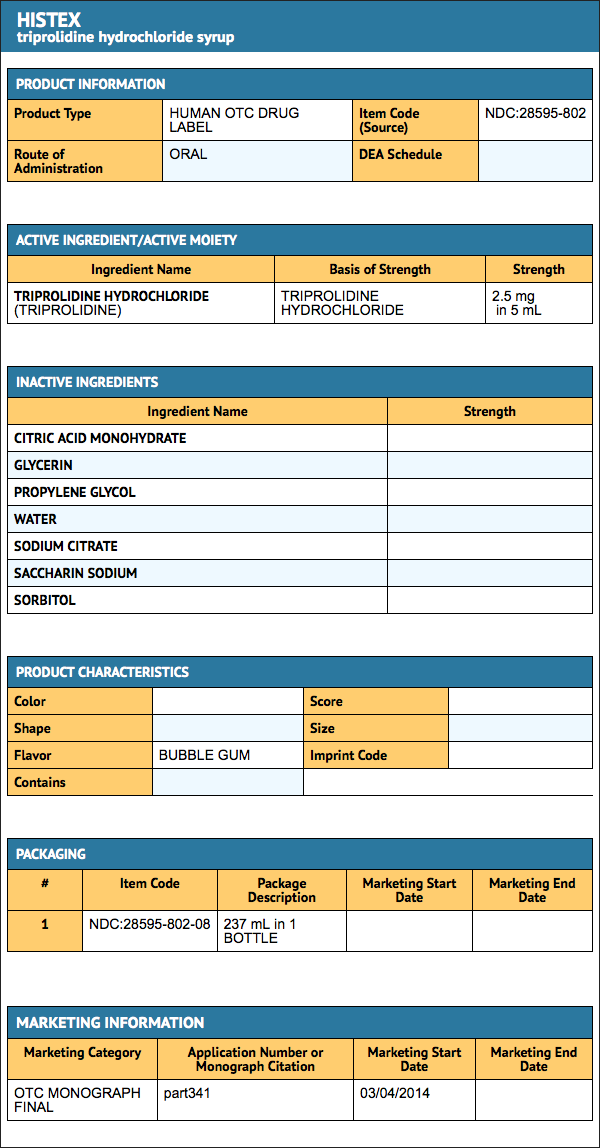
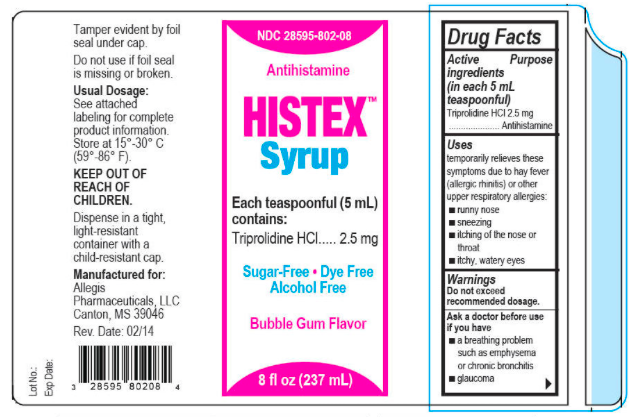
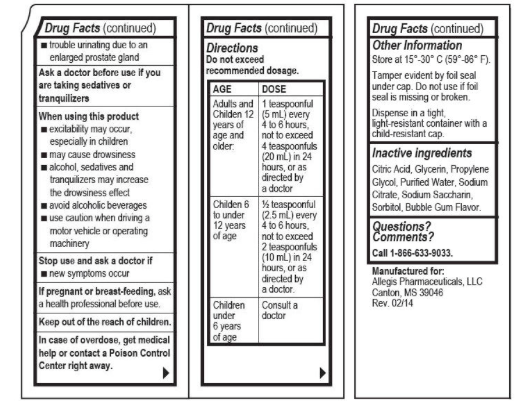
{{#ask: Label Page::Triprolidine |?Label Name |format=template |template=DrugLabelImages |mainlabel=- |sort=Label Page }}
Patient Counseling Information
There is limited information regarding Triprolidine Patient Counseling Information in the drug label.
Precautions with Alcohol
Alcohol-Triprolidine interaction has not been established. Talk to your doctor about the effects of taking alcohol with this medication.
Brand Names
Look-Alike Drug Names
There is limited information regarding Triprolidine Look-Alike Drug Names in the drug label.
Drug Shortage Status
Price
References
The contents of this FDA label are provided by the National Library of Medicine.